The DC Extended Universe has been saved. Wonder Woman and Aquaman offered fine alternatives to the darker tone of the rest of the franchise, but Shazam! is arguably the best live-action superhero movie in decades. Yes, I might even consider this comedic, heartfelt comic book adaptation better than The Dark Knight, as well as anything in the Marvel Cinematic Universe. But perhaps I’m just an old-timer appreciating the influence of ’80s movies.
Speaking of which, I have some of those to recommend in this week’s edition of Movies to Watch After… And yes, one of them is the obvious choice actually used in the pitch for the plot and tone of Shazam! Regular readers of these lists will notice I don’t have a token documentary pick, but considering doc-studies guru Bill Nichols considered all fictions to be “documentaries of wish-fulfillment,” let’s pretend all the fictions of wish-fulfillment below are the obligatory docs of the week.
Spider-Man: Into the Spider-Verse (2018)
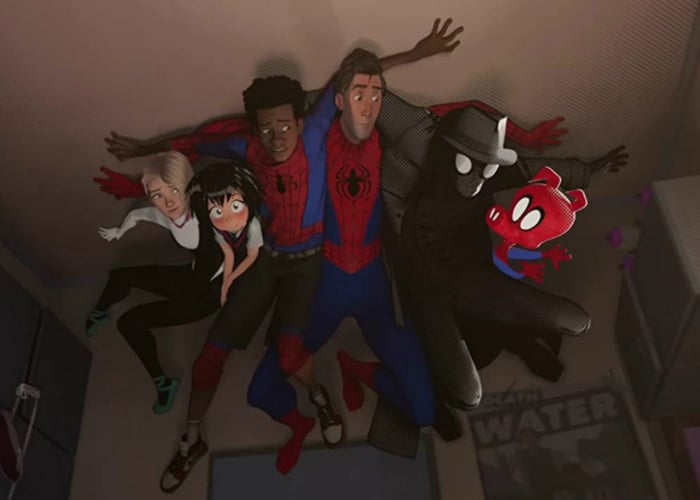
The connection: We’re experiencing a new trend in superhero movies lately, as multiple movies are selling the message that anyone can be a superhero. Sure, that was also a theme of Kick-Ass almost 10 years ago, but between Shazam!, Aquaman, Glass, and Spider-Man: Into the Spider-Verse, the idea has become more common in the last few months. Shazam! is about finding the hero inside all of us; Into the Spider-Verse is about how anyone can wear the mask of a hero like Spider-Man.
The recommendation: While I consider Shazam! the best live-action superhero movie since the ’80s, the new DC Comics adaptation’s biggest competition for superhero movies overall is this Oscar winner named the Best Animated Feature of last year. Not only is the theme important, along with its character diversity, and the multiverse sci-fi plot fantastic, but Into the Spider-Verse is one of the most innovative works of mainstream feature film animation in maybe decades.
Power Rangers (2017)
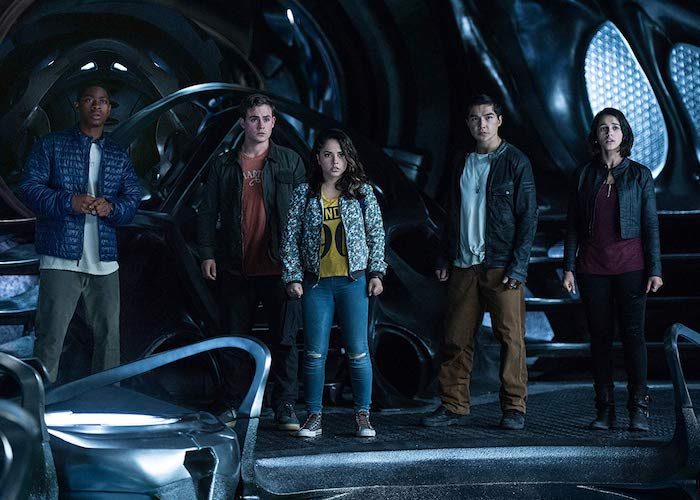
The connection: Like Shazam!, Power Rangers is about a diverse bunch of outcast kids who transform into (usually unrecognizable) costumed superheroes. Their enemy is, like Dr. Sivana in Shazam!, someone who was previously given the chance to be one of these magical heroes, but she went and chose the dark side instead, betraying and harming the good guys — her backstory is also aligned with the reference to Black Adam in Shazam! as a hero corrupted by the temptation of evil.
The recommendation: With its inclusive cast of characters and hammy performance by Elizabeth Banks in the villain role, Power Rangers is a surprisingly passable adaptation of the cheesy ’90s children’s television series about color-coded-costumed superheroes who use martial arts and mechas to fight Rita Repulsa (Banks). It should be more of a kids’ movie, or it should be a better film for its nostalgic adult audience, but the young actors, particularly R.J. Cyler, are all worth watching.
The Iron Giant (1999)
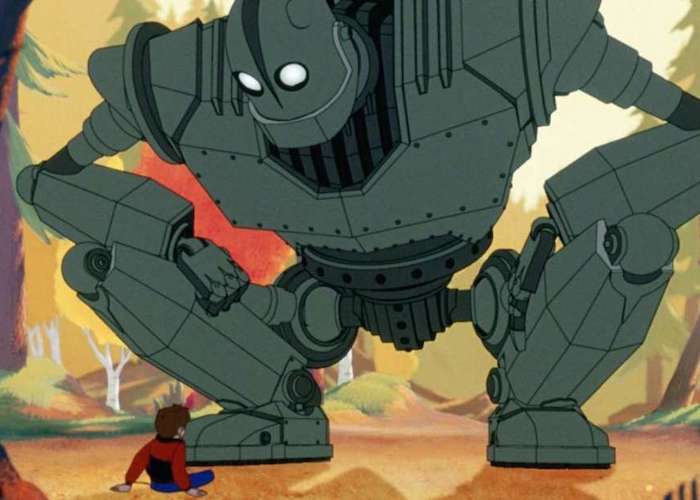
The connection: This animated feature from Brad Bird is about a boy and his hero, which is comparable to either Billy Batson having Shazam as his alter-ego or Freddy Freeman having Shazam as his superhero BFF. It’s just that the big hero of The Iron Giant is a large metal robot, albeit one that dreams of being Superman (Shazam’s more famous DC Comics colleague). As with Shazam!, this is a wish-fulfillment representation that depicts super-heroism through a child’s eyes.
The recommendation: Despite flopping during its theatrical release, The Iron Giant has become recognized as one of the last true classics of traditional animation. Based on Ted Hughes’ children’s novel The Iron Man, the movie appeals to all ages with its mature but important themes regarding violence, death, and existentialism. And in speaking as the title character, Vin Diesel proved early on, way before taking on the role of Marvel’s Groot, that he was the perfect voice for seemingly simplistic emoting.
Star Wars: Episode I — The Phantom Menace (1999)

The connection: A young boy is deemed the chosen one, but like Thaddeus Sivana, Anakin Skywalker eventually chooses the dark side. In this movie, though, little Ani is more like Billy Batson, doing good with his powers and responsibility, even if some of his beyond-his-years heroism is also a bit beyond his control or at least outside of his comprehension of what he’s doing or how. There’s also a legacy hero situation where an older wizard (Jedi) dies as his successor(s) rise into place as master.
The recommendation: Twenty years after George Lucas let Star Wars fans down with a convoluted political story and the slapstick and cringe-worthy patois of Jar-Jar Binks, many of us have gone soft on The Phantom Menace, especially if we have children with different contextual experiences with the prequels. Episode I is far from perfect, but it does have a lot of moments where it shines, including a lengthy racing sequence and a thrilling three-man lightsaber duel.
Big (1988)
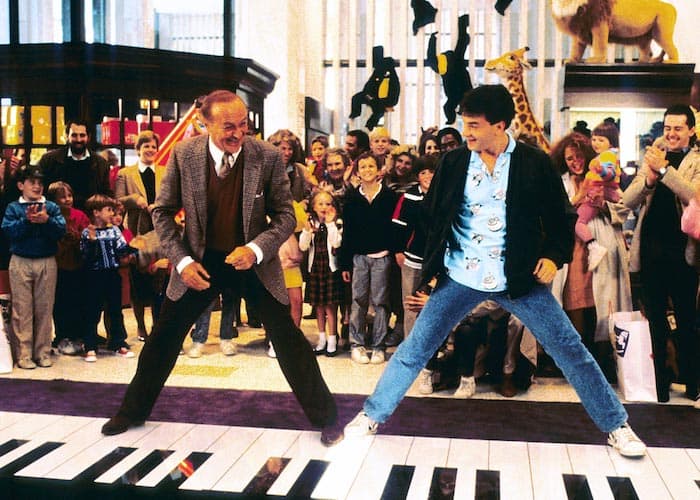
The connection: In the comics, the whole concept behind Shazam being a grown-up superhero alter-ego for a kid is similar to the plot of Big, in which a boy gets his wish to be “big.” And the makers of Shazam! really leaned into the connection, pitching the movie as Big meets Superman. And he’s got a best friend along for his adventures, just like Big‘s Josh has his buddy Billy helping him get through the fantasy. There’s even at least one notable Easter egg paying tribute to an iconic moment in Big: the floor piano bit. Fortunately, Billy Batson never loses his virginity while in adult form, but he does go to a strip club.
The recommendation: Outside of the cringe-worthiness of the 13-year-old kid inside a man’s body sleeping with a grown-up woman, Big is a classic comedy and one of Tom Hanks‘ best performances from before he went all serious — in fact, he managed his first Oscar nomination for the effort, a rarity for this kind of acting in this kind of movie. I have to give a shoutout to Jared Rushton, who never gets much recognition for holding his own opposite Hanks in his sort-of sidekick role.
The Neverending Story (1985)

The connection: Just as in Shazam!, the main character of The Neverending Story is running from bullies when he ducks into a safe place — an antique book store rather than a Septa train — and is transported to another world in which he’s trusted to be the one true hero and importantly has to say the name of a person with great power. And, of course, in the end, he gets to put the bullies in their place with help from the magic and some fantastical characters he’s met along the way.
The recommendation: The Neverending Story is a huge nostalgia movie, beloved by tons of people who grew up in the ’80s. Does it hold up today for new generations of kids? It should, even if there are some scary parts — just like that one boardroom scene in Shazam!. This is the sort of serious philosophical fantasy adventure saga for young audiences that they don’t make anymore (and going by the terrible sequels, lost sight of quite quickly). The climax is kinda hokey, but the rest is awesome.
Ghostbusters (1984)

The connection: Not only is Ghostbusters one of the movies that Shazam! director David F. Sandberg has cited as an influence (along with 1984’s Gremlins and 1985’s Back to the Future and The Goonies — all of those Steven Spielberg productions), but it’s one that can be felt in the new superhero movie in its comedic tone combined with its horror elements. Ghostbusters never has its monsters kill anyone on screen, though, let alone bite a guy’s head off. The shot of the board members being attacked against the glass of the board room is very much lifted from a scene where Rick Moranis’ character is captured by a terror dog.
The recommendation: Ghostbusters is one of the few big-budget genre pictures that can get away with being an outright comedy as well as a genuine sci-fi/fantasy flick without seeming like a spoof of some kind. Other movies have tried to be the next Ghostbusters and have failed miserably, including its own sequels and reboots. It’s crazy that Sony is going to even try again with the upcoming Ghostbusters 3. This original was one of those lighting-in-a-bottle movies.
Indiana Jones and the Temple of Doom (1984)

The connection: Spielberg’s own directorial effort of 1984 is, along with Gremlins, credited with influencing the MPAA to create the PG-13 rating. If Shazam! seems like it should be for all ages except for that one potentially traumatizing mass murder in the boardroom scene and some rather adult-themed jokes and gags, well it is rated PG-13. Indiana Jones and the Temple of Doom has similarly iffy subject matter and scares for seeming okay for kids but is rated PG. Sandberg addressed the line he drew for the content of Shazam! in an IndieWire interview, in which he discusses other Spielberg movies, namely 1993’s Jurassic Park and the earlier Indiana Jones installment, Raiders of the Lost Ark (1981):
“I’m a horror guy, but I basically figured that as long as I don’t do anything that ‘Jurassic Park’ wouldn’t do, that was sort of the benchmark. Kids grow up with ‘Jurassic Park’ and it’s still pretty violent. Like the guy on the toilet who gets eaten! Or there’s like a chopped off arm and all these things. I was like, ‘As long as I don’t go that far, I know I’ll be good…I think a lot of those old movies have a little bit of everything. They have the fun sense of adventure, but they also have a lot of the heart, and sometimes even a bit of horror. As a kid, I loved ‘Raiders of the Lost Ark,’ which has people’s faces melting off, which is pretty scary.”
Superman II (1980)
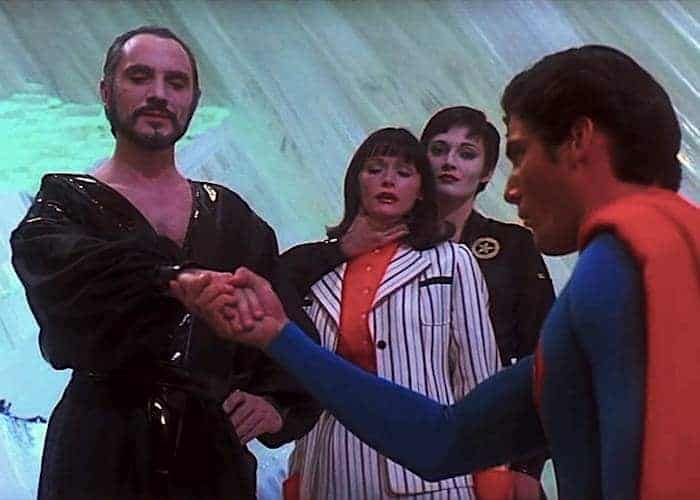
The connection: Well, aside from also being about a superhero from DC Comics — a character who actually makes a cameo in Shazam!, this pre-DC Extended Universe Superman movie is the cream of the crop when it comes to being both a great superhero movie and also very, very funny. Superman II also has a multitude of villains, including Lex Luthor and a few of Supes’ fellow Kryptonians broken out of their imprisonment, who together equal the whole of Shazam!‘s Dr. Sivana when he has the Seven Deady Sins powers.
The recommendation: While I’m still a fan of the 1978 Superman: The Movie above all other superhero movies, Superman II is a close second and is quite the mix of tones thanks to its blend of material directed by Richard Donner and reshoots done by replacement helmer Richard Lester. Between the two, this has it all in terms of perfect superhero movie match-up fight scenes and hilariously goofy but not over the top sight gags and an underrated comedic performance by Christopher Reeve.
Rocky (1976)
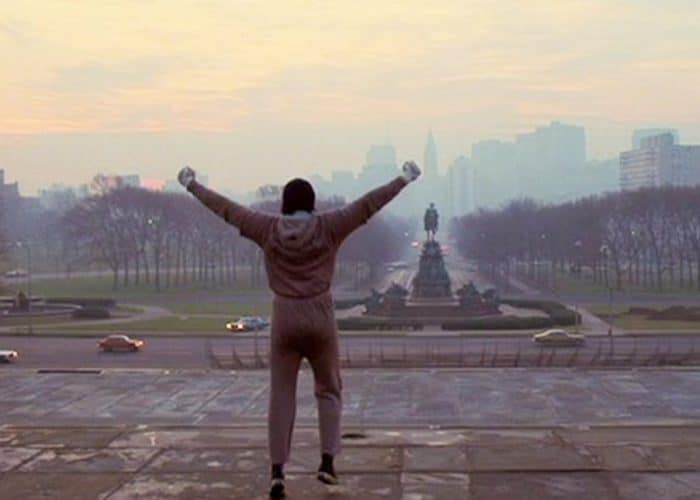
The connection: Philadelphia. Also, Shazam goes to the top of the steps to the entrance of the Philadelphia Museum of Art and references Rocky and its main character directly. He later returns to the location to do some showing off for fans, when he sings about his own lighting powers to the tune of Survivor’s “Eye of the Tiger,” known as the iconic theme song for Rocky III. Until Shazam! came around, Rocky was Philly’s biggest movie hero. And he didn’t even need lighting from his hands.
The recommendation: Nothing else beats the first Rocky in the arena of underdog sports movies, especially since the original doesn’t end as you expect, at least by today’s formulaic storytelling standards. The Rocky franchise has gone off the rails and gotten back on the track over the years, but there’s a reason that this one took home the Oscar for Best Picture and catapulted writer/star Sylvester Stallone to stardom. This is a classy boxing drama that’s more of a great American dream tale than an American sports tale. Also, it made Philly iconic again, for the first time in almost 200 years.
Bedazzled (1967)
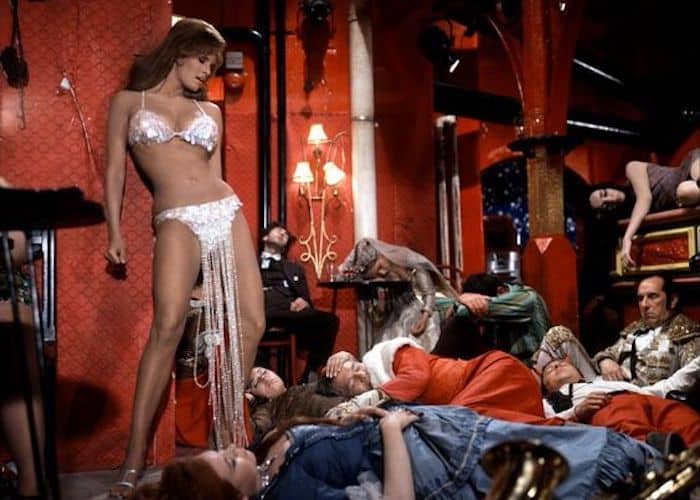
The connection: Like Big, this comedy fantasy deals in wishes, only in a more Faustian manner. Here it’s the Devil (Peter Cook) rather than a mechanical genie or old wizard who grants the poor protagonist (Dudley Moore) what he desires, and so each wish has an unfortunate twist. And helping the Devil out are personifications of the Seven Deadly Sins. Rather than taking the form of monsters, as in Shazam!, they’re played by the likes of Barry Humphries (Envy) and Raquel Welch (Lust).
The recommendation: Especially if you’re only familiar with the remake starring Brendan Fraser, or pretty much any other comedic take on the Faust story, the Stanley Donen-helmed original Bedazzled is essential viewing for its approach to the legend. Also, especially if you’re only familiar with Moore from his years in Hollywood movies and Cook from his brief role in The Princess Bride, you need this as an introduction to a British comedy partnership that’s legendary all its own.
Adventures of Captain Marvel (1941)
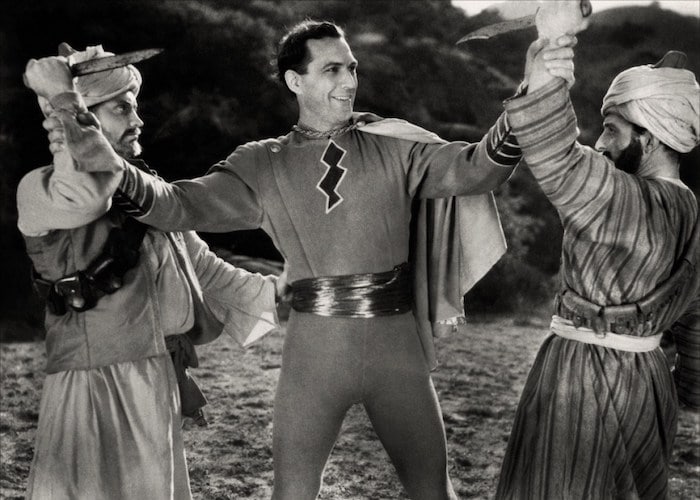
The connection: It’s probably not that obvious since it’s called Adventures of Captain Marvel rather than Adventures of Shazam, but this is an earlier film version of the same character from Shazam! Back when he was known as Captain Marvel. And not even yet a DC Comics character. Really, the only similarities are in part of the origin story of young Billy Batson being given the SHAZAM powers by a magical wizard and becoming a caped superhero with a lightning bolt on his chest.
The recommendation: Usually I don’t recommend previous versions of movies at hand, because I tend to highlight them at the start of the year in another list, but for some reason, I forgot to assign this title for the release of Shazam! because I was too focused on catching up with DC Extended Universe titles. Also, it’s technically a serial — and therefore more like a limited series than a movie — Adventures of Captain Marvel is one of the most notable titles of this format as well as one of the earliest examples of a superhero comic book adaptation on the big screen — Captain Marvel/Shazam even beat out future publisher pals Superman and Batman. And given the bigger budget of this serial, the special effects are more remarkable for their time.
The post Watch ‘Shazam!’ Then Watch These Movies appeared first on Film School Rejects.
0 comments:
Post a Comment